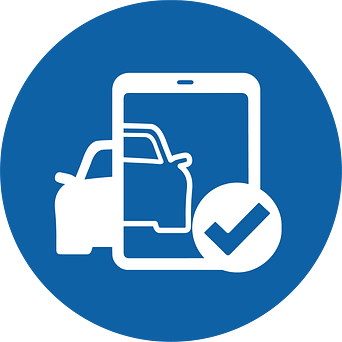These days, new technology is pouring into the automotive industry at an exhilarating rate, with each new product becoming faster, better, and more efficient than the last. In the flood of new gadgets, software, and mobile apps, how can you possibly know which upcoming technologies will be truly impactful? It’s hard to know for sure which of these new technologies will disrupt the industry or your own business. It is possible, however, for me to bring you my own informed opinion, as well as some valuable industry insights and diligent research, to help you decide for yourself which of these new trends should be on your radar as we come to the final quarter of 2017.
Augmented Reality

Perhaps one of the most fascinating new technologies to impact our industry is the integration of Augmented Reality. Whereas virtual reality is meant to completely transform or replace a person’s view of the world with something manufactured, augmented reality is the addition of certain elements to the existing world. Examples of this new technology are
becoming hugely popular: if you’ve ever used a Snapchat filter to add a dog nose to your photo, or even Google Translate to scan and interpret a sentence or word, you’ve used augmented reality.
Although it may seem like the stuff of science fiction movies, Augmented Reality has already become a part of many mainstream manufacturer’s repertoire. BMW, the first car manufacturer to introduce this system, is already using virtual reality applications not only on the sales room floor, but also in the training of its employees[1]. Imagine letting a customer test-drive your vehicle without ever leaving the sales floor, or being able to instruct technicians in real-time on best repair practices. With this technology, the possibilities are endless; the consumer experience as well as the professional’s experience could be forever changed by new and upcoming AR apps for automotive.
3d Printing
Imagine being able to print anything, right there in your office. Need a pencil? Printed. How about a new chair? Easy. Of course, your run-of-the-mill office printer probably won’t be able to pull off such a feat, but there are now printers that absolutely can, and more. In 2014, Local Motors printed the first 3d printed car. Now, companies such as Honda have manufactured vehicles with most of their panels and body printed from a 3d printer, such as the Micro-Commuter. With the creation of new and improved materials for car manufacturing has come a new and innovative way to craft those materials, resulting in lighter, stronger vehicles[2]. Although 3d printing has been used in the past as a way of creating models and prototypes, companies are quickly investing in 3d printing for the manufacturing of specialty parts and even fixtures and tools. This technology is sure to develop and adapt as well, as interest in it grows in the industry.
Machine Learning-Based Vehicle Cybersecurity
When the Ford Model-T was first created in 1933, the inside of the vehicle looked radically different from your average car today. Not only was the in-vehicle experience based solely on the driving controls themselves, but there was also no other technology involved. Walk outside and get into any recent model car, and you’ll find FM radio, GPS navigation, and nowadays, Bluetooth connectivity; even companies like Apple and Samsung have started to experiment with integrating their smart devices into cars. There’s much more to protect than there used to be, and so car security has had to radically evolve as well.

Now, many cars are also featuring 4GLTE connectivity: they’re connected to the internet, like our smartphones. With this upgrade comes new, high tech upgrades in the car’s security system. As thieves are becoming more and more tech savvy, the threat of hackers is very real, and unfortunately, hard to protect against, as new and unique methods are popping up all the time. Machine learning is working to change that; instead of identifying only known threats, artificial intelligence and learning machines would enable cars’ security systems to appraise threats and adjust without being explicitly programmed. These new cybersecurity programs are self-adapting, and are creating new ways to guard against new threats, without human intervention. As self-driving cars also become more popular, this facet in automotive technology is sure to become hugely important and impactful in the coming years. [3]
It’s hard not to be overwhelmed and in-awe of all the great new technology we experience every day. Although it may begin to feel more and more like a science fiction movie, the possibilities presented by these technologies are endless and exciting. These three technologies are sure to have a huge impact on our industry, so keep an eye out for some big changes in the months to come.

 Harmony AI
Harmony AI Intelligent Appointments
Intelligent Appointments Tablet Vehicle Check-In
Tablet Vehicle Check-In Digital MPI
Digital MPI UpdatePromise App
UpdatePromise App AI-Driven Status Updates
AI-Driven Status Updates Dashboard Analytics
Dashboard Analytics AutoRepair-Review.com
AutoRepair-Review.com Full Merchant Services
Full Merchant Services Clover & Payment Devices
Clover & Payment Devices Sunbit
Sunbit SmartPath Service
SmartPath Service MONOGRAM Service
MONOGRAM Service Honda
Honda Acura
Acura Genesis
Genesis Audi
Audi Service Lounge Podcast
Service Lounge Podcast All Features
All Features

